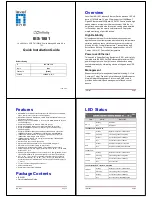
192
The device supports only one device reboot schedule. If you configure the
schedule reboot at
command
multiple times, the last configuration takes effect. The
schedule reboot at
command and the
schedule
reboot delay
command overwrite each other, and whichever is configured last takes effect.
The alert "REBOOT IN ONE MINUTE" appears one minute before the reboot time.
For data security, if you are performing file operations at the reboot time, the system does not reboot.
Examples
# Configure the switch to reboot at 12:00 AM. This example assumes that the current time is 11:43.
<Sysname> schedule reboot at 12:00
Reboot system at 12:00 06/06/2006(in 0 hour(s) and 16 minute(s))
confirm? [Y/N]:
Enter
y
at the prompt. If you have used the
terminal logging
command to enable the log display function
(enabled by default) on the terminal, the system automatically displays a reboot schedule log message.
<Sysname>
%Jun 6 11:43:11:629 2006 Sysname CMD/4/REBOOT:
vty0(192.168.1.54): Set schedule reboot parameters at 11:43:11 06/06/2006, and system will
reboot at 12:00 06/06/2006.
Related commands
schedule reboot delay
schedule reboot delay
Use
schedule reboot delay
to schedule a device reboot to occur after a delay for all IRF member devices.
Use
undo schedule reboot
to disable the scheduled reboot function.
Syntax
schedule reboot delay
{
hh:mm
|
mm
}
undo schedule reboot
Default
The scheduled reboot function is disabled.
Views
User view
Default command level
3: Manage level
Parameters
hh:mm
: Specifies a delay for the device reboot, in the
hh:mm
format. The
hh
value ranges from 0 to 720,
and the
mm
value ranges from 0 to 59. When the
hh
value is 720, the
mm
value cannot be more than
0.
mm
: Specifies a delay for the device reboot in minutes, which ranges from 0 to 43200.
Usage guidelines













































